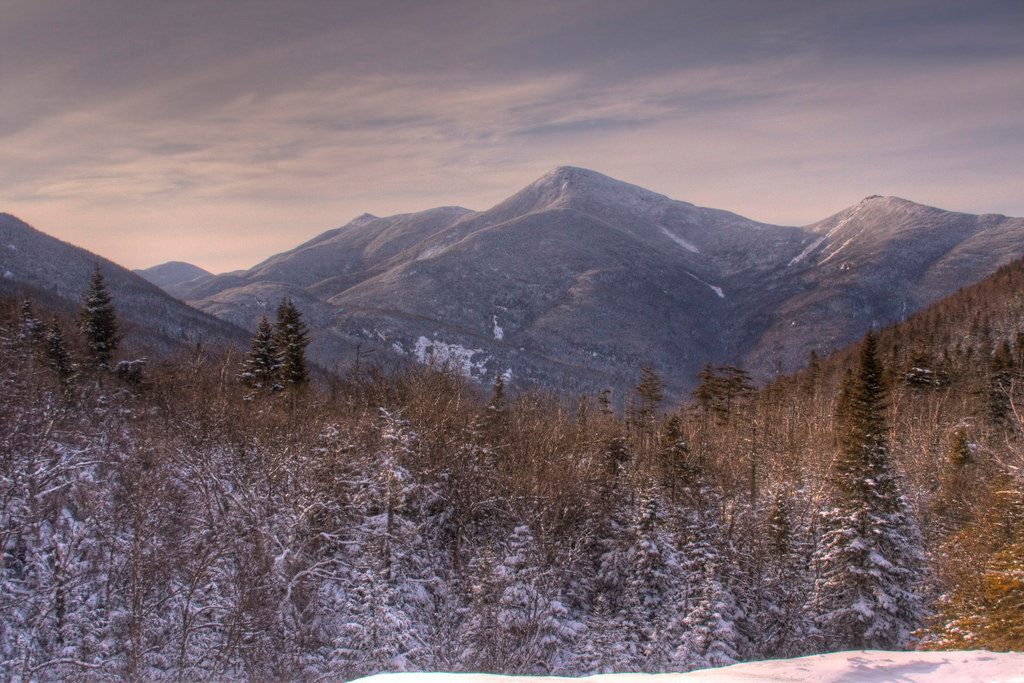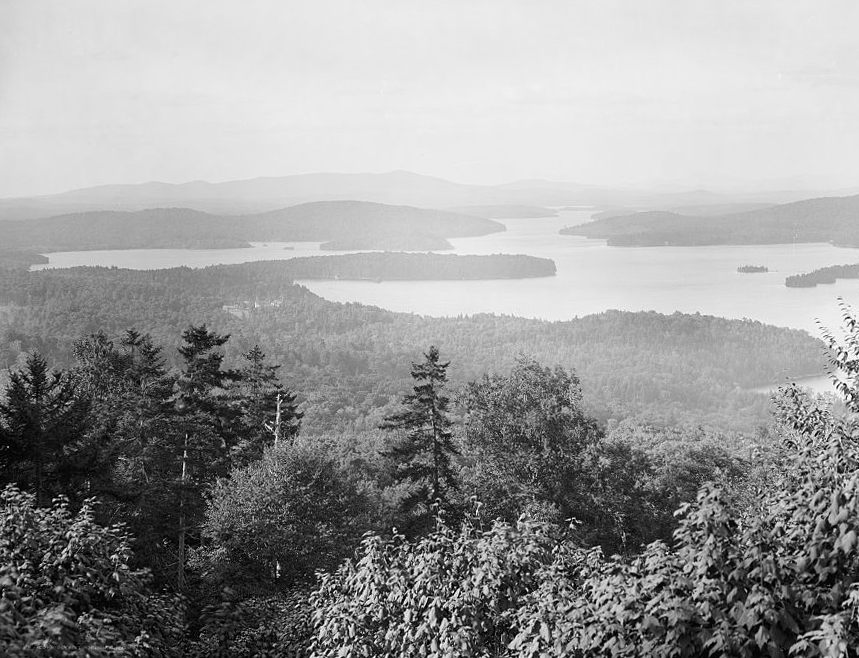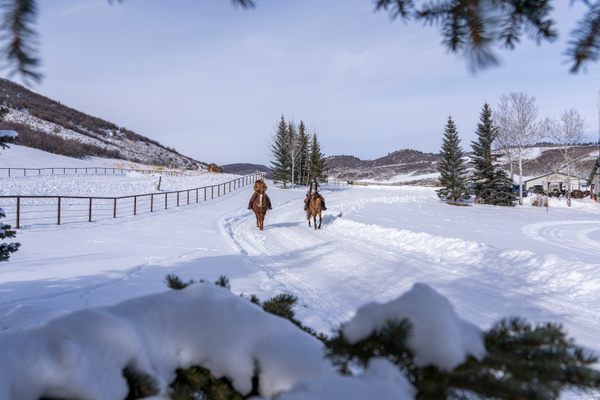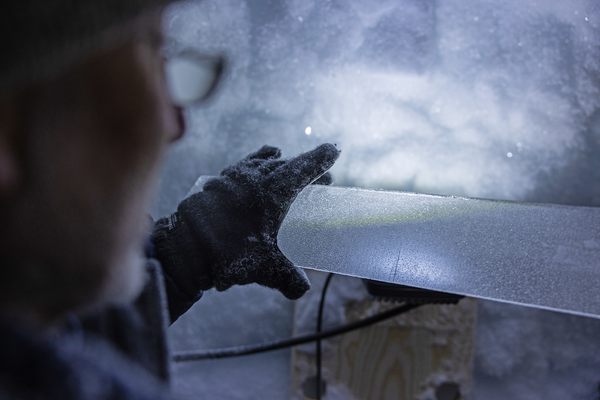There’s More to the 46 ‘High Peaks’ of the Adirondacks Than Hiking
Over the past century, a community has developed around these mountain peaks, each over 4,000 feet in elevation.

My sons and I were on the trail that day because of a quest. This wasn’t about exercise or stress relief or forest bathing. We were on a mission, to summit Wright and Algonquin. Two more peaks to add to our list.
The main trunkline out of Heart Lake, a north-south highway through the center of the High Peaks of the Adirondacks, is like Roman road: trod by so many booted feet that it is sunken, beaten into the earth, the banks of the trail often waist and shoulder high. It was a brilliant late summer day, and at the lower elevations the purple-tipped maples matched the purple granite of the mountains in a brief moment of cohesion. But as we climbed, the hardwoods retreated, and only the spruce and pine remained, until even they were driven out by the cold and the wind, leaving nothing but trampled rock and pockets of moss and wildflowers.
A few hikers passed us on the way up, including one woman in heavy-duty boots accompanied by her tongue-lolling dog and clearly miserable boyfriend. The happy calico mutt was wearing a harness covered in patches indicating peaks and their elevations.
“Well, she is a Forty-Sixer,” the young woman said, as explanation.
“All of you are?” I asked; my sons and I want to be Forty-Sixers too.
“No, just me and her,” she said proudly, then stuck a thumb towards the noob boyfriend. “He’s on number two.”
And that made us feel good, because we were on number nine, and no longer noobs ourselves.

The Adirondacks in New York are the largest protected park in the continental United States—bigger than Yellowstone, Everglades, Glacier, and Grand Canyon combined—and within that boundary, 46 peaks rise over 4,000 feet of elevation. Anyone that climbs them all—in any order, over any number of years—becomes a Forty-Sixer. Among hikers in the know, it is a prestigious accomplishment, many marathons worth of trail-work. Some of the peaks lie within easy range of a parking lot, but most require multi-day excursions, to valley-floor base camps below each massif. That dog had done the work to earn those patches.
On that sunny day, my sons and I had chosen two of the more-accessible peaks. It was only three-and-a-half miles from our campsite up to the first summit, through forest that lay in a thick carpet. We were like mites passing among the bristles. But that relatively short path concealed 2,500 feet of elevation gain, and we were panting hard by the end. My youngest son, only eight years old, got vertigo near the end. We had left the trees behind, the trail became all bare rock marked by cairns, and while no steeper than earlier sections, the view was dizzying. For a while, my boy lay flat on his stomach so he couldn’t fall off the mountain.
Wright Peak was worth all the effort, though. And so we added one more of the 46 to our list, our tenth. The rest of that list, in order of completion: Phelps, Porter, Cascade, Giant, Couchsachraga, Santanoni, Panther, Nye, Street. Only 36 more to go.

The Adirondack Mountains feel higher and more remote than they really are, lying only a few hours drive from the major East Coast metros, Montreal, and the upstate Rust Belt. This sense of isolation is partially a matter of climate, as it can snow on the summits even in summer. But it is also related to their natural history: the southernmost outpost of the Canadian Shield, a stand-alone dome scraped clean by the glaciers, exposing rock so ancient it predates multi-cellular life. On the flanks of the Adirondack peaks, the tiny stunted trees, brutalized all winter into the twisted husks of krummholz, can be hundreds of years old. And the lichen, sedge, and flowering grasses clinging to the exposed summits form a genuine alpine zone, remnants of the last ice age, a pin head’s worth of Greenland transposed south and made accessible to average vacationers.
These natural resources have long attracted holiday-hikers and mountaineers alike. The Adirondacks are home to over 100,000 permanent residents, some living in ski towns and lumber hubs, and others in the poshest Gilded Age digs imaginable. They serve as an ex-urb for those fleeing other refuges closer to New York and Boston; when Concord and the Hudson Valley got too crowded, Emerson and the Vanderbilts moved north.

Bob and George Marshall were children of just such privilege, and in the 1910s and 1920s, summered at a Great Camp near the Saranac Lakes, in the heart of the park. With their guide and family friend Herb Clark, the brothers began hiking the high peaks when they were teenagers. By 1925, when Bob was 24 and George was just 21, the three men had already summited all 46 peaks believed to be over 4,000 feet, the treeline threshold for many of the mountains. Very few had established trails, though, and the matter might have remained there if Bob Marshall did not write a how-to guide, The High Peaks of the Adirondacks, in 1922.
Both Marshall brothers would go on to become environmental leaders. Bob founded the Wilderness Society. George served as president of that non-profit after his brother’s death, and ran the Sierra Club for a while. But within the Adirondacks, the men’s greatest contribution, arguably, is serving as the inspiration for hundreds of thousands of hikers that would attempt to trace their steps.

Among the first to catch the high-peak fever were the pastor and parishioners of Grace Methodist Church in Troy, near Albany, New York. Reverend Ernest Ryder was the seventh to summit the rotation, and would coin the term “Forty-Sixer.” Ed Hudowalski made a hiking club out of his Sunday school class, and started leading trips. His wife Grace finished the circuit in 1937, the first woman and ninth overall to do so. As a courtesy, she began to record the names and dates of everyone who finished the 46, and when a new club, the Adirondack Forty-Sixers, held its first meeting near Heart Lake in the spring of 1948, they elected Grace the first President. She would also become the first historian, a job she did for 59 years.
Grace Hudowalski’s list of Forty-Sixers grew and grew, and she made a point of corresponding with each aspirant, asking for their stories. After her death in 2004, others took over but could barely keep up with the volume of inquires. The current co-chairs of the Office of the Historian are a husband-and-wife team, Lee Nesbitt and Siobhan Carney-Nesbitt. Over email, Lee said that there is no one kind of Forty-Sixer—“children, college kids, people who are unemployed, self-employed, blue collar, white collar”—but that the trails are busy, and over the last decade “there definitely is more people out there.”
The numbers are astounding in their growth. Most hikers take years to complete the 46. The current roster is 10,136, and while still exclusive, it is multiplying rapidly. In 2008, about 180 people were added to the rolls. The classes have increased every year since, to more than 700 in 2016. As many names have been added in the last 10 years as the first 72.
It is no coincidence, to most observers, that this Forty-Sixer popularity coincides with the growth of social media. “It used to be people sharing photo slides and other people begrudgingly putting up with viewing them,” Lee said. “Nowadays people love sharing and viewing people’s trips and in return more people get interested in doing it themselves.”
The Adirondacks are particularly photo-ready. They contain five essential elements for the perfect varied natural scene: water, rock, sky, vegetation, elevation. This is not just my opinion; check out #46er.
Among many outdoor enthusiasts, this whole process—seeking out summits only because they are on some arbitrary list, and then recording every hike—is sometimes derisively known as peak-bagging. Purists hold the exercise in poor regard for its emphasis on stamp-collecting and train-spotting, rather than the natural experience itself. The extreme version of peak-bagging involves racing the circuit, trying to beat the records for each FKT (fastest known time), a stat diligently tracked on an international message board.
Between 2000 and 2004, a man calling himself Cave Dog set a number of speed records, including the 46. Starting with the Colorado 14,000-footers—in jean shorts, no less—he also knocked off the New Hampshire 4,000-footers, the 35-over-3,500 in the Catskills, the 6,000-footers in Tennessee and North Carolina, and the Vermont Long Trail.
Cave Dog, also known (perhaps more appropriately) as Teddy Keizer, was from Oregon, and he beat the 46 record, long held by locals, by a full day. “Not everyone liked an outsider cruising through like that,” say Jan Wellford, another speed hiker. Wellford was from southern Massachusetts, but had family in the Adirondacks’ Keene Valley, and visited regularly. He decided to make a run at it, and reclaim the title for the locals.
Wellford set out on June 24, 2008. His wife drove him between trailheads, and he slept a few hours at a time, when his body gave out. He says the challenge is not the total distance, a relatively short 155 miles, but the elevation: over 60,000 feet. Wellford finished three days, 17 hours, and 14 minutes later. He beat Cave Dog by an hour.
Wellford now guides parties of inexperienced hikers to popular summits. He said he understands the purists, but disagrees with them. “If it takes a list to get people to come back to the mountains, I’m all for it,” he says, adding that social media explains much of the recent popularity.
In the middle of his own FKT run, he took a selfie on the top of Wright, the handsome hulk of Algonquin in the background.

It turns out that the original geological survey of 1897, the one the Marshalls utilized in their hikes, wasn’t quite right. Forty-Sixers still go by the traditional list, but modern methods have shown four of the 46 are actually below the threshold.
Most hikers today could do without those four: the shortest, only 3,820 feet, is Couchsachraga, an Algonquin word for “dismal wilderness.” It lives up to the name because somehow, seemingly against the rules of hydrology that state water must drain away, a primordial swamp guards the summit.
But my kids and I have done Couchsachraga—miserable as it was, and no, I’m never going back—because we’re completists and collectors and ultimately, agree with Wellford. If it takes a list and a goal to get father and sons out on the trail together for days at a time, then so be it.
On our latest hike, on that late-summer day, our goal, after Wright Peak, was Algonquin, a classic hike and, at 5,114 feet, the second highest of the 46. The whole path was visible from the summit of Wright: the drop into the thickly-forested saddle between the mountains, the steep climb out, the exposed slickrock that dotted the slope like islands in a green sea.

On our way off Wright, we detoured to a memorial that looks out over the valley. A small plaque was driven into the stone face, and along the ledge, the well-preserved crash remains of a B-47, the U.S. Air Force’s first modern bomber. In 1962, an aircrew of four men was on a training mission out of Plattsburgh, a base on Lake Champlain 40 miles to the northeast. A storm rolled in unexpectedly, and high winds blew them off course. Unable to see, First Lieutenant Rodney D. Bloomgren, the aircraft’s pilot, drove the plane directly into the broadside of the mountain. No one survived.
How many of the peak-baggers stop and notice this, I wondered? Only for a moment, though, because then we pushed on too.
Algonquin’s approach proved more precarious than its final push to the summit. Hiking with children, I’ve learned chocolate cures all sorts of aches, pains, and bad attitudes, but it was hardly required as we scampered the cliff faces, some well-suited for a climbing gym. And then, all of sudden, we poked through the trees and stood in the alpine meadows of club moss and diapensia. The last half mile was joy. Number 11.

Standing at the top, next to the old rusting survey spike, was a young man with a long wizard beard, wispy like a frayed cloud. He introduced himself as the summit steward, and said it was his job to mind the top of Algonquin five days a week.
“Basically, I tell people to stay off the grass,” he said.
“This place gets a lot of traffic,” I said. “How many are doing the Forty-Six?”
“Too many. That’s why most of these people are here,” he said. Around us, young couples and middle-aged men in compression socks were busy on their smart phones, taking photos. We agreed it was a bit like Pokémon Go, trying to catch every high peak.
“I’ve done more than 46 peaks,” the summit steward went on, “but I haven’t done the 46, if you know what I mean. If I do it, I probably won’t even register.”
“Not me,” said an older gentleman behind us. “I’ve already registered with the Forty-Sixers, and this is my second peak. I’m going to do them all.”




















Follow us on Twitter to get the latest on the world's hidden wonders.
Like us on Facebook to get the latest on the world's hidden wonders.
Follow us on Twitter Like us on Facebook